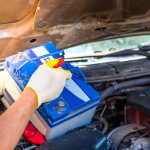When it comes to boosting your vehicle’s performance, car enthusiasts often find themselves at a crossroads: should they opt for a ProCharger or a traditional supercharger? Both options promise to enhance horsepower and overall engine efficiency, but they do so in distinct ways that cater to different driving styles and applications.
In this article, we’ll delve into the mechanics behind each system, explore their unique benefits, and help you decide which one might give you the competitive edge you’re looking for. Whether you’re a seasoned gearhead or just starting your journey into the world of automotive performance upgrades, you’ll find valuable insights to help guide your decision. Let’s buckle up and dive into the world of forced induction!
Understanding the Basics of ProChargers and Superchargers

When it comes to boosting your engine’s performance, both ProChargers and superchargers are popular choices, but they operate based on different principles. ProChargers utilize a centrifugal force mechanism, which compresses air to increase the engine’s intake efficiency. This allows for greater horsepower gains without requiring extensive modifications. Their design typically includes an external belt-driven compressor mounted away from the engine, making them suitable for a wide range of applications from street cars to race vehicles. On the other hand, superchargers are directly connected to the engine’s crankshaft, relying on positive displacement to force air into the combustion chamber. This results in immediate power delivery, which is highly beneficial for performance enthusiasts seeking instant throttle response.
One of the keys to determining which option is right for you lies in understanding their respective advantages and disadvantages. Here’s a quick comparison:
| Feature | ProCharger | Supercharger |
|---|---|---|
| Power Delivery | Progressive with RPM | Instantaneous |
| Efficiency | High at high RPM | Less efficient at high RPM |
| Tuning Complexity | Moderate | Simpler |
| Installation Cost | Generally higher | Typically lower |
Ultimately, both systems can significantly enhance your vehicle’s performance, but the choice between them depends on your specific driving style and needs. If you favor high-end power with efficiency during spirited driving, a ProCharger might be your best bet. Conversely, if you want that immediate, raw power for street racing or quick acceleration, a supercharger could prove more advantageous.
Performance Differences: Boosting Power and Efficiency
When it comes to enhancing your vehicle’s performance, the choice between a ProCharger and a supercharger can significantly impact both power and efficiency. ProChargers utilize an innovative centrifugal design, allowing them to deliver a remarkable boost in horsepower while maintaining efficiency. This style of forced induction provides a more linear power band, making it easier to manage power delivery across the entire RPM range. In contrast, traditional superchargers, especially Roots-style ones, tend to provide a significant power increase at lower RPMs. While this might be ideal for drag racing and short bursts of acceleration, it can sometimes compromise overall efficiency when cruising or during daily driving conditions.
To help illustrate the differences in performance characteristics, consider the following table comparing key features:
| Feature | ProCharger | Supercharger |
|---|---|---|
| Power Delivery | Linear across RPM | More low-end torque |
| Fuel Efficiency | Higher efficiency | Can be less efficient |
| Installation Complexity | Moderate | Relatively straightforward |
| Heat Management | Better at lower temps | May require additional cooling |
Ultimately, your choice will depend on your specific driving needs and preferences. A ProCharger may be the way to go for those seeking a balance of power and efficiency, while a supercharger could be more suited for enthusiasts looking for that immediate power surge. The key is to assess how you plan to use your vehicle and what kind of performance enhancements align best with your driving style.
Installation and Maintenance Considerations for Your Setup
When choosing between a ProCharger and a supercharger, installation plays a crucial role in determining the overall performance and reliability of your setup. ProChargers, typically requiring a more complex installation process, involve mounting the unit, running additional ducting, and integrating with your vehicle’s existing systems. On the other hand, traditional superchargers may be simpler to install, but they often come with their own challenges, such as ensuring proper alignment and pulley sizing. It’s essential to consider whether you will be tackling the installation yourself or enlisting professional help, as this can significantly impact the time and cost involved.
Once installed, ongoing maintenance is vital to keep your forced induction system performing optimally. For ProChargers, regular inspections for belt wear, fluid levels, and intercooler efficiency can help prevent issues that could affect your vehicle’s performance. Meanwhile, supercharger systems may require specific checks on the oil used in the unit and periodic belt tension adjustments. Below are some key maintenance tasks for both systems:
ProCharger: Check belt tension and wear every 5,000 miles.
Supercharger: Change oil in the supercharger unit as recommended by the manufacturer.
Both: Inspect for any signs of leakage or unusual noises regularly.
| Feature | ProCharger | Supercharger |
|---|---|---|
| Installation Difficulty | Higher complexity | Moderate complexity |
| Maintenance Frequency | Every 5,000 miles | Manufacturer’s recommendation |
| Performance Consistency | Boost on demand | Constant boost |
Choosing the Right Option for Your Vehicle and Driving Style
When it comes to enhancing your vehicle’s performance, selecting the right power-adder can significantly alter your driving experience. ProChargers and superchargers offer distinct advantages that cater to different driving styles. If you’re someone who craves an adrenaline rush and prefers high-speed performance during acceleration, a supercharger may be your best bet. Superchargers provide immediate boost, ensuring you get that power right off the line, making them ideal for drag racing enthusiasts and those who enjoy a punchy driving style. On the other hand, ProChargers excel in providing a blend of efficiency and power over a wider range of RPMs. They are perfect for drivers who appreciate sustained performance and higher top-end speeds, especially in street and track applications.
To determine which option aligns best with your needs, consider the following factors:
Driving Style: Do you prefer instant power or a smooth power curve?
Vehicle Usage: Is your car primarily for daily driving, racing, or off-roading?
Installation Complexity: Are you ready for a more intricate installation process, or do you prefer a simpler setup?
Budget: How much are you willing to invest in modifications?
To further assist your decision-making, here’s a quick comparative overview:
| Feature | ProCharger | Supercharger |
|---|---|---|
| Boost Type | Intercooled Supercharger | Direct Drive |
| Power Delivery | Higher RPM Efficiency | Instant Torque |
| Cost | Higher Initial Cost | Moderate Cost |
| Ease of Installation | Complex Installation | Relatively Simple |
Q&A
Q1: What’s the primary difference between a ProCharger and a traditional supercharger?
A1: The main difference lies in their design and how they generate boost. A ProCharger is a type of centrifugal supercharger that uses a belt-driven impeller to compress air and increase engine power. It typically mounts externally, while traditional superchargers, like Roots or Twin-screw types, are mounted directly on the engine and provide immediate boost at low RPMs. This external design allows ProChargers to operate more efficiently at higher RPMs.
Q2: How does a ProCharger improve engine performance?
A2: A ProCharger increases engine performance by compressing more air into the engine’s intake. This allows for more fuel to be burned, resulting in a significant horsepower boost. Since it operates at high RPMs, it tends to provide a more linear power curve, allowing for smoother acceleration and high-end power delivery.
Q3: Are there any advantages to using a traditional supercharger?
A3: Yes, traditional superchargers excel at providing low-end torque, which can be beneficial for street driving and towing applications. They deliver boost immediately as they are driven directly by the engine’s crankshaft, ensuring quick throttle response and strong performance right from idle.
Q4: What are the installation and maintenance considerations for each?
A4: Installation can vary significantly between the two. ProChargers often require custom mounting solutions and a dedicated cooler system, which can make installation a bit more complex. Maintenance for a ProCharger generally involves checking belts and fluid levels, while traditional superchargers may require more frequent inspections due to their heat generation. Both systems will benefit from regular maintenance to ensure optimal performance.
Q5: Which option is more suitable for street vs. race applications?
A5: For street applications, traditional superchargers can be advantageous due to their immediate power delivery and torque, making driving more enjoyable in everyday situations. For racing environments, particularly those requiring high RPM power, ProChargers are often favored for their ability to provide impressive top-end performance, making them ideal for high-speed applications.
Q6: How do costs compare between ProChargers and traditional superchargers?
A6: Generally, ProChargers can be more expensive than traditional superchargers, both in terms of initial purchase price and installation costs. However, the specific price can vary based on the vehicle application and the performance goals. It’s advisable to evaluate your budget and desired performance outcomes before making a decision.
Q7: Which one is easier to tune?
A7: Tuning can depend on several factors, including the specific vehicle and engine setup. However, many enthusiasts find that tuning for traditional superchargers tends to be more straightforward due to their simpler boost curves. ProChargers may require more complex tuning strategies to optimize performance, especially given their higher RPM capabilities.
Q8: Can I switch from one system to another?
A8: Yes, while it can be a labor-intensive process, it is certainly possible to switch from a ProCharger to a traditional supercharger or vice versa. Keep in mind that this will often require additional modifications, such as changes to the intake, exhaust, and potentially the engine management system, so thorough planning is essential.
Q9: which one gives you the edge?
A9: The choice between a ProCharger and a traditional supercharger ultimately depends on your specific needs, driving style, and performance goals. If you’re looking for high-end power and efficiency at the track, a ProCharger might be your best bet. However, if street drivability and instant throttle response are more important to you, a traditional supercharger could provide the edge you need. Consider your priorities, do some research, and enjoy the journey of boosting your ride!
Concluding Remarks
choosing between a ProCharger and a supercharger ultimately comes down to your specific needs, preferences, and the goals you have for your vehicle. While both options offer significant performance enhancements, they each come with unique characteristics that may cater to different driving styles and applications. ProChargers are known for their efficiency and power potential, especially for those looking to push their engines to the limit, while superchargers provide that instant boost and a more straightforward installation for many enthusiasts.
As you weigh your options, consider factors such as your budget, how you plan to use your vehicle, and your comfort level with modifications. No matter which route you take, both systems can dramatically elevate your driving experience, allowing you to enjoy more power and thrills on the road. So, whether you’re hitting the track or just cruising around town, understanding the differences between ProChargers and superchargers will empower you to make the best choice for your ride. Happy tuning!











